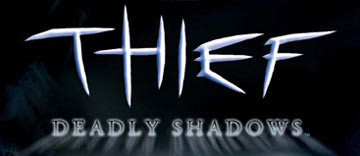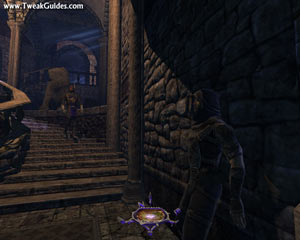Thief: Deadly Shadows Tweak Guide
Author: Koroush Ghazi
Last Modified: June 2007
Introduction
The original Thief: The Dark Project was released in 1998 and broke the mold when it came to first person shooters. Here was a game which encouraged stealth above all else: the avoidance of detection was a primary objective. Well, that and stealing everything that wasn't nailed down of course. Thief created a new genre known as the 'First Person Sneaker', and really only the Thief series has ever occupied this genre successfully. A combination of tight storyline, an intriguing and likeable main character, incredible atmosphere and meticulous attention to detail made Thief stand out from the crowd. The second Thief game, Thief II: The Metal Age was released in 2000 and continued the tradition, but flash forward to 2004 and it's been a long while in between drinks for the eager Thief community.

When the third Thief game was announced, there was a great deal of trepidation amongst loyal Thief fans. Would this be another poor quality console-to-PC port? Would there be too much change to the winning Thief formula just to appease the masses? Would Garrett turn straight and start building homeless shelters? Well I am extremely happy to say that the answer to all these questions is a resounding "No!". Thief: Deadly Shadows is a superb game and worthy of the mantle of 'Thief III'. It continues the tradition of atmospheric, stealthy, plot-driven gameplay which is highly immersive and extremely familiar to Thief fans. Some features of the game are clearly console-derived (like loading zones), however in some ways this is compensated by new features such as the cinematic 3rd person view, and Garrett's newfound ability to see his own body parts and shadow.
The Thief: Deadly Shadows game engine is also a pleasant surprise. A heavily modified version of the Unreal Engine, it uses incredible dynamic lighting, pixel and vertex shading effects and ragdoll physics to raise the bar on previous Thief games, and matches many recent first person shooter. Not that Thief was ever about cutting-edge graphics, but the atmospheric visuals of this game greatly assist in immersion, along with the state-of-the-art EAX audio and some of the best voice acting and dialogue you will find in any modern game. If you've never tried the Thief series, Thief: Deadly Shadows is a great way to get hooked.
However, just like any other modern game Thief: Deadly Shadows comes with its fair share of issues. The Unreal Engine, modified or not, needs some decent hardware to pump out the eye candy, and just as important is the need for a great deal of fine tuning to get the most out of it. Funnily enough, that's exactly what this guide does – show you how to tune your system and the game's settings to get the smoothest performance possible. To round out the detailed descriptions of settings and tweaks, there are also links to important troubleshooting and community information resources. All in all, the guide is a steal.
Note: This guide refers to the latest version of Thief: Deadly Shadows (Version 1.1). Make sure to check back regularly for updates.

